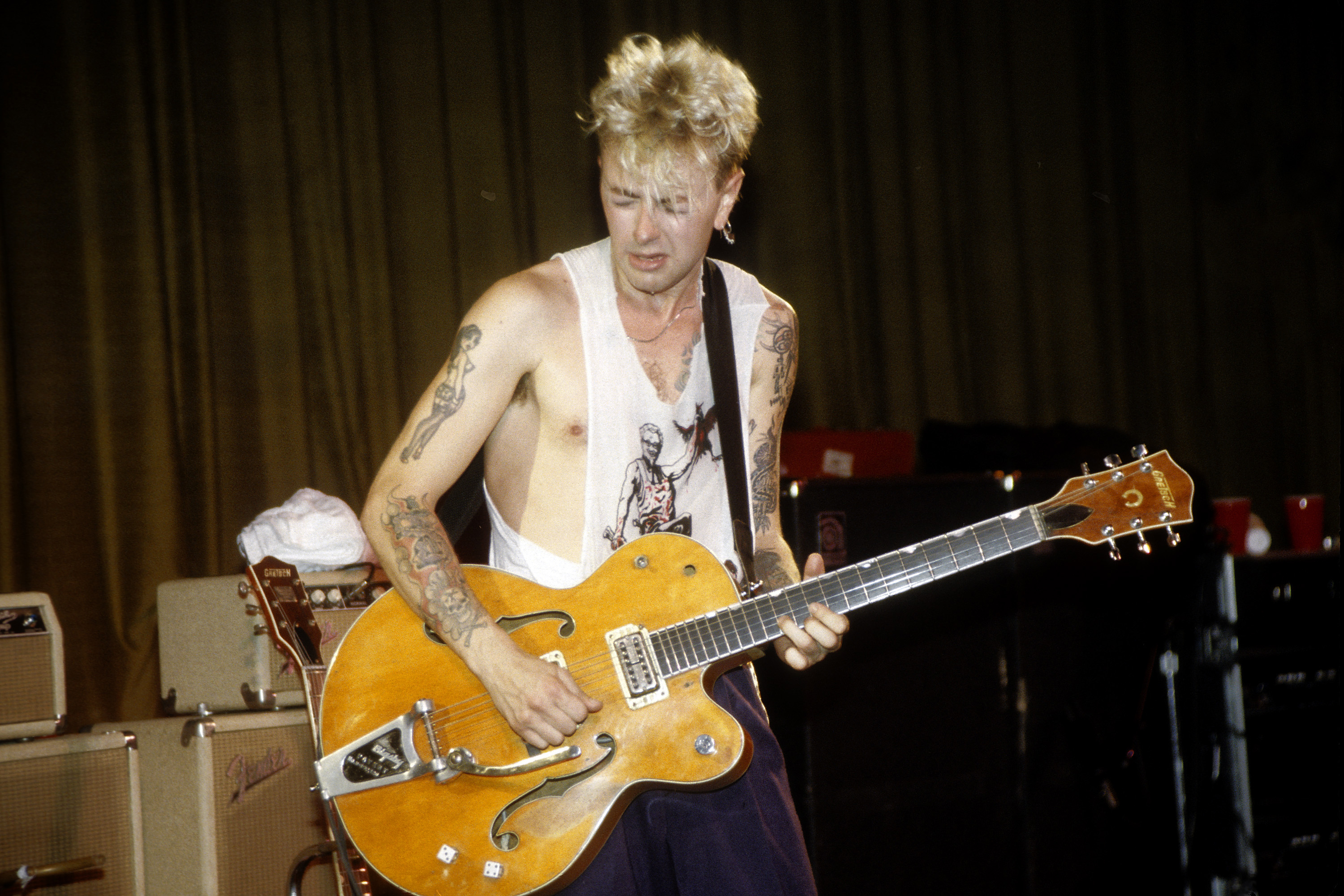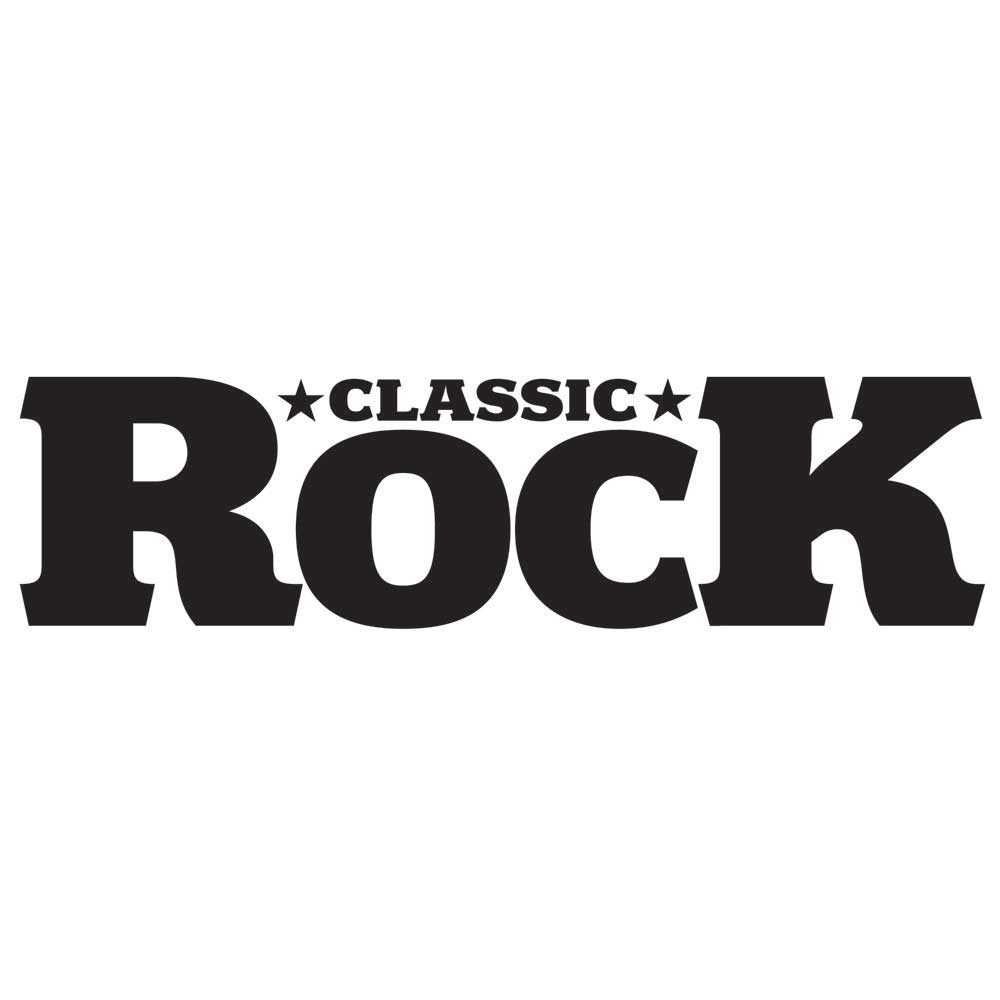40) Jimi Hendrix - Machine Gun
From: Jimi Hendrix – Band Of Gypsys, 1970
JOE SATRIANI: “Jimi Hendrix’s solo on Machine Gun is one scary, earth-shattering performance. The improvisation, technique and control of his equipment is perfect and shocking. And to think that night was just a gig at the Fillmore East, three guys onstage with their relatively primitive equipment.
“When you try to play it yourself, you realise he didn’t have an arrangemental device where it was, say, a lydian scale here, a symmetrical scale there, it was really just E! – E-kinda minor. It really is Wild West rock guitar. He’s using the vibrato bar, feedback, and telling so many stories with so few notes.
“Here was a black man on stage playing with African-American musicians in front of a largely white audience in New York, with Vietnam still going on. Machine Gun’s a protest song, as old-school as you can get. It brings me to tears every time. One evening in New York City that young man reached deep into his soul and really did something. It stands as a true testament to an amazing talent, and a great human being.”
39) Eric Clapton - All Your Love
From: John Mayall – Blues Breakers With Eric Clapton, 1966
JOE BONAMASSA: “This is the one everybody learned how to play the blues from. This and Double Crossing Time on the same album. They’re both unbelievably good, and between them they set me on the path towards my love affair with British blues players.
“What makes Clapton’s playing so influential and special is that it sounds like a human voice – the tone, the phrasing. It’s right up at the edge of being frantic but it’s always under control, especially in those early days.”
38) Robby Krieger - Light My Fire
From: The Doors – The Doors (1967)
Robby Krieger took the bare bones of this song to rehearsal for The Doors to work on. He and Ray Manzarek were both big jazz fans, which is clear from the song’s mechanics: their long solo section draws on the two chords John Coltrane extemporised over on My Favourite Things. They flesh these out, amping up their inherent suspension – first Manzarek’s organ, then Krieger, who plays this languid cracker on his trademark Gibson SG through a Fender Twin Reverb, and all using just his fingertips.
“His timeless opening lines switch between the rarely used dorian mode and its more familiar bluesy relative scale, all spiced up with some nippy chromatics; surfy, Dick Dale-style slides; and, up at the dusty end of neck, an exotic Arabic scale from Krieger’s flamenco days. Those final bending lines are yet another hook in a No.1 single full of them, and that resolution back into the main organ riff is nothing short of exultant. Krieger only had two stabs at recording this and thought he could’ve done it better, but his off-the-cuff brilliance here produced an inspired, iconic moment on one of the era’s landmark recordings.
37) Ace Frehley - Shock Me
From: Kiss – Love Gun, 1977
By 1977 it was clearly established that within Kiss Paul Stanley and Gene Simmons sang lead on the majority of tunes, with Peter Criss performing one (or two, max) on their studio recordings. And despite Ace Frehley contributing some gems in the songwriting department (Cold Gin, Parasite), he had yet to sing a single song. That is until Shock Me. While the song title was supposedly inspired by a near-fatal experience the Space Ace experienced on stage in 1976 (when he was accidentally electrocuted), the lyrics were 100 per cent Kiss – in other words, sex. But when it came to the guitar solo, it’s vintage Ace.
Frehley is one of the few rock guitarists who regularly played solos that were mini-songs within the songs and that you could hum the melodies of (Brian May and David Gilmour are two more), Shock Me is one of his finest – and one of his longest ever on a Kiss studio album, split into two sections. Perhaps inspired by the fact that he was working with producer Eddie Kramer, who collaborated with his hero Jimi Hendrix, Ace doesn’t disappoint here. And when the song was performed live – as heard on Alive II – it featured an extended, unaccompanied solo complete with his trademark smokin’ guitar.
36) Brian Setzer - Stray Cat Strut
From: Stray Cats – Stray Cats, 1981
The only man who can wear a lime-green leopard print Teddy-boy suit and not look like a complete tit, Brian Setzer put rockabilly and big orange Gretsch guitars back in business. Written off as revivalists when they arrived on the scene in the early 80s, Setzer and Stray Cats bandmates Slim Jim Phantom (drums) and Lee Rocker (bass) saved rock from bloated glam-rock refugees and light-entertainment fodder such as Showaddywaddy.
Setzer actually plays two solos on Stray Cat Strut. The first is a deceptively simple-sounding series of comp’d chords and jazz runs topped with a tricky-to-master string-hopping technique. The second is pure hillbilly blues with intense string bends.
The guitar sound on Stray Cat Strut – and just about everything else Setzer has recorded – is fuelled by the hollow-body Gretsch G6120, as endorsed by Chet Atkins and cherished by Eddie Cochran in the 1950s. Setzer favours the FilterTron humbuckers, first seen on the 1959 model. “I bought my main 6120 when I was about sixteen, for a hundred dollars,” he once recalled. “In those days you couldn’t give Gretschs away. Everybody wanted a Les Paul or a Strat.”

35) Richie Sambora - Wanted Dead Or Alive
From: Bon Jovi – Slippery When Wet, 1986
Richie Sambora: “For me, the whole riff and idea behind Wanted Dead Or Alive was to get acoustic guitar back on the radio. It was 1986, and you didn’t hear big, double-neck acoustic guitars on the radio any more. So my biggest influence there was obviously Jimmy Page.
“But I only owned, like, three guitars at that point in my life. The ones I used predominantly on Slippery When Wet and New Jersey were Charvel. Stick it through a couple of Marshalls and that’s the whole sound right there.
“The lick for Wanted came to me sitting there one day. But I wanted to do something different with the solo. When you listen to that solo there are chords in it – actually barre chords in the solo.
“I never ever get tired of playing it. Why would I? People have got to understand: Guess what? I wrote that. That’s a lot of my song.”
34) Billy Gibbons - Sharp Dressed Man
From: ZZ Top – Eliminator, 1983
ZZ Top’s Billy Gibbons has always been an exponent of the ‘less is more’ approach to guitar playing: why widdle a thousand notes when three can get the point across just as effectively? ZZ’s 1983 album Eliminator became a monster hit, but Gibbons’s guitar style remained unchanged. The use of peso coins as picks and strings so light-guage that an angel would deem them wimpy help him attain a treacle-thick tone. Blended with his minimalistic technique, the results are captivating.
Sharp Dressed Man is in essence a blues song and it’s addressed as such. Few similarly successful tunes feature such a down-’n’-dirty slide guitar solo. He then jettisons the bottleneck and continues with perfectly phrased notes marinated in spicy Texan sauce.
The single’s sleeve shows Gibbons with a red Dean Z guitar made by luthier Dean Zelinksy, the same model that was later swaddled in sheepskin for the Legs video. Ditch the cars, the girls and the spinning guitars and ZZ Top still rule. And that’s mainly down to Billy Gibbons.
33) Scotty Moore - Hound Dog
From: Elvis Presley – Hound Dog (single), 1956
ROBIN TROWER: “Scotty Moore was the guy for me. He made me want to play guitar. I was obviously a big Elvis fan too, but Scotty’s impact, musically, on the world is really underrated. I have my doubts that without Scotty Moore Elvis would’ve broken through quite so easily.
“He created a really unique sound. The riffs he was coming up with on things like Mystery Train… I mean, I’d never heard anything like that before. I don’t know if anybody else had, but I certainly hadn’t. I think he played with fingers and a thumb pick, and he had a beautiful sound, very musical. And unique ideas on every track. When all that’s combined you’ve got something very special.
“I think after working with Elvis he just retreated into being a session player in Nashville and Memphis. What he did with Elvis was enough to make him a legend.
“I don’t think Scotty influenced me in any stylistic sense, because he was so individual and he invented what he played for a different kind of material. He changed my life simply because when I heard him on records like Hound Dog and Heartbreak Hotel I wanted to play guitar. That is the major influence.”
32) Wayne Kramer - Looking At You
From: MC5 – Back In The USA, 1970
WAYNE KRAMER: “I put some thought into the structure of each of Looking At You’s three solos. The playing was improvised and different with each take. The first section, I wanted to use the entire range of the guitar, so I started as low as I could (open low E string) and ascended in a minor scale up to the high B note on the high E string (I think). The second chorus, my idea was to emulate John Coltrane’s ‘sheets of sound’, and the third I just rocked it out à la Chuck Berry on steroids.
“I used my custom stars-and-stripes Fender Stratocaster; I’d just had a humbucker pickup installed because I needed just a little extra oomph to get my solos out and above Fred’s [‘Sonic’ Smith, guitarist] playing. I played through a Fender Concert amp. No pedals, just raw tube amp on full volume.
“It’s still one of my favourites. It was pretty good playing for a fellow in his early twenties. The original single version of Looking At You on A-Square Records that was produced by John Sinclair is a lot more rockus, but I like them both.”
31) Scott Gorham - Dancing In The Moonlight (It’s Caught Me In Its Spotlight)
From: Thin Lizzy – Bad Reputation, 1977
SCOTT GORHAM: “Initially, I was going to go in and improvise over the top and just walk away from it, but as the song developed I decided to work out something specific – à la what Jimmy Page had done with Stairway To Heaven. That one was quite obviously a worked-out, pre-planned solo.
“At the time I was listening a lot to an American jazz guitarist from the 1950s and 60s named Wes Montgomery. His lead guitar style was derived from octaves, and I’d never heard anyone in rock music do that. So after discussing the idea with Tony Visconti [producer of the album Bad Reputation], who said that he really loved it, that’s what I tried to do; incorporate that technique of Wes’ into my playing. Nowadays, it’s one of the first things that’s taught when somebody begins learning the guitar but back then it made a few people sit up in surprise.
“Everybody seems to remember my solo to that song, so I’m pretty happy about that. Another solo of mine that I’m especially proud of is Bad Reputation, from the same album, and a lot of people tell me that they like Downtown Sundown – and that one’s also from Bad Reputation, so I guess I must have done pretty good on that album.”
